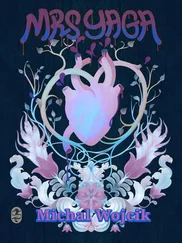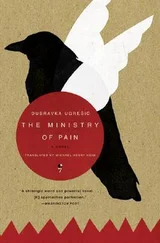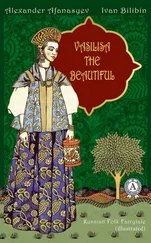
Also by Dubravka Ugrešić in English translation
Fiction
The Ministry of Pain
Lend Me Your Character
The Museum of Unconditional Surrender
Fording the Stream of Consciousness
In the Jaws of Life
Essays
Nobody’s Home
Thank You For Not Reading
The Culture of Lies
Have A Nice Day
First published in 2007 by Geopoetika, Belgrade and Vuković & Runjić, Dudovec 32a, 10 090 Zagreb
First published in Great Britain in 2009 by Canongate Books Ltd, 14 High Street, Edinburgh EH1 1TE
This digital edition first published in 2009 by Canongate Books
Copyright © Dubravka Ugrešić, 2007
English translation of Preface and Part I, copyright © Ellen Elias-Bursać, 2009
English translation of Part II, copyright © Celia Hawkesworth, 2009
English translation of Part III, copyright © Mark Thompson, 2009
The moral rights of the author and translators have been asserted
Every effort has been made to trace copyright holders and to obtain their permission for the use of copyright material. The publisher apologises for any errors or omissions and would be grateful if notified of any corrections that should be incorporated in future reprints or editions of this book.
The publishers gratefully acknowledge subsidy from the Scottish Arts Council towards the publication of this volume
British Library Cataloguing-in-Publication Data
A catalogue record for this book is available on request from the British Library
ISBN 978 1 84767 608 5
www.meetatthegate.com
‘Put this lady’s massage on my account.’
‘Wow, mamma, tits like a hippopotamus!’
Ruslan and Ludmila , transl. by Jenni Blackwood ( www.sunbirds.com/lacquer/readings/1015)
‘ He flattered me, seducer fashion! / And I succumbed to reckless passion… Deceiver, profligate! Oh shame! / But tremble, heartless libertine!’
‘The golden nightingale!’
‘Thank you, pussycat!’
Goli Otok and St Grgur are islands off the Croatian coast where real or suspected Soviet sympathisers were imprisoned in the clamp-down following Yugoslavia’s break with Stalin in 1948.
‘OK, little one, I see that you’re never going to learn.’
‘You are very talented, Jana, very talented…’
‘You’re as lovely as a quail’s egg.’
‘Marlena, if you leave me, I’ll kill you, honestly, don’t laugh, I’ll kill you, you bitch, just watch me, I’m telling you…’
I should warn you at the outset about the difficulties of transliterating Russian and other Slavic languages into English. There is no consensus on the best mode of transliteration, and the scope for confusion is broadest in texts – such as this – which cite from languages that are written in the Cyrillic alphabet (Russian, Bulgarian, etc.), as well as from those written in the Roman or Latin script (Croatian, Czech, Polish, etc.). As this is a private letter, meant ‘for your eyes only’, I have not tried to take a consistent approach. Russian and Belorusian names and words have for the most part been transliterated. The other Slavic languages are easier to pronounce than you suppose, if you follow these simple rules: š = sh (Mokoš = Mokosh); č., ć = ch (domaći = domachi); ž = zh (život = zhivot); j = y (Jaga = Yaga), đ = dj (prođ-e = prodje), etc.
‘They approached the hearth where they found two old grannies with two balls of wool: one was winding the wool, the other unwound it. The one who was winding was day, and the other was night.’
K. V. Chistov, Zametki po slavjanskoj demonologii, Baba Jaga. Moskva: Zhivaja starina 1997.
Maria Gimbutas, The Language of the Goddess . London: Thames & Hudson 2001.
Tihomir R. Ðorđević, Veštica i vila u našem narodnom predanju i verovanju . Beograd: Srpski etnografski zbornik 1953.
In the classic film Cat People (1942), directed by Jacques Tourneur, New York fashion designer Irena Dubrovna is a Serb by extraction. When they are smitten with jealousy or rage, women from the land of her ancestors turn into bloodthirsty wildcats, or in this case panthers, that kill their mates. In the scene that takes place in a New York restaurant, called The Belgrade, an unknown woman recognises Irena Dubrovna and her secret feline self. This woman comes up and says something in Serbian (with a strong American accent, naturally): Ti si moja sestra , meaning ‘You are my sister.’
Tihomir R. Ðorđević op. cit.
Petar Petrović Njegoš (1813–1851), the Vladika (Prince-Bishop) of Montenegro, was a great poet as well as a ruler and warrior. His verse drama Gorski Vijenac ( The Mountain Wreath ), about a massacre of ‘renegade’, i.e. pro-Turkish, Montenegrins, is a classic of South Slavic literature.
This lack of hair even features in Roald Dahl’s popular children’s story The Witches , where baldness is one of the clues that a woman is a witch. (‘That is why they have claws and bald heads and queer noses and peculiar eyes…’) Which is why witches all wear wigs to hide their real identity.
Istria is a triangular peninsula on the northern coast of Croatia.
Konavle is a valley at the southern end of Croatia.
The following observation may strike you as trite, but isn’t it interesting that commonplaces related to genocide are so rapidly forgotten? If nothing else, this is a reason why we need to keep reiterating that universal male misogyny, down the centuries, has produced cultural and symbolic genocide against women. One of the worst eruptions of this misogyny was the European inquisitorial witch-hunt that lasted practically for four centuries. The Inquisition began around the end of the 12th century and the beginning of the 13th, when Pope Gregory IX sent his inquisitors to the territories contaminated by heresy, and then officially entrusted the conduct of inquisitions to the Dominican order (1235). The congregation of cardinals was established fully in 1542, with legal authority over the inquisition. An estimated 100,000 witches were burned in Europe between 1560 and 1660, though the actual numbers are not known. The first trial of witches took place in Toulouse in 1335. After that, witch-hunting spread across Europe like a prairie fire, and 1486 brought the publication of the remarkable book by Kraemer and Sprenger, the Malleus Maleficarum . The inquisitors now had ideological underpinning: the first textbook which put their labours on ‘a solid scholarly foundation’. There are documents about the victims of inquisitorial torture: incomplete, to be sure, but they do exist. Moreover, many more women suffered outside the inquisitorial system. Their inquisitors were their neighbours, from the same village, motivated not so much by Christian obedience as by local beliefs and superstitions. Village women suspected of being witches were dunked in water. If they sank and drowned, it proved they were not witches. If they kept afloat, they were fished out of the water and beaten to death. Women believed to be witches were even defiled after death. Their bodies were penetrated with wooden poles and pierced with needles, or iron nails were driven into their mouths, and their graves were sown with poppy seeds (the dead woman would have to count each and every seed). The graves of suicides were treated in the same way.
Читать дальше













